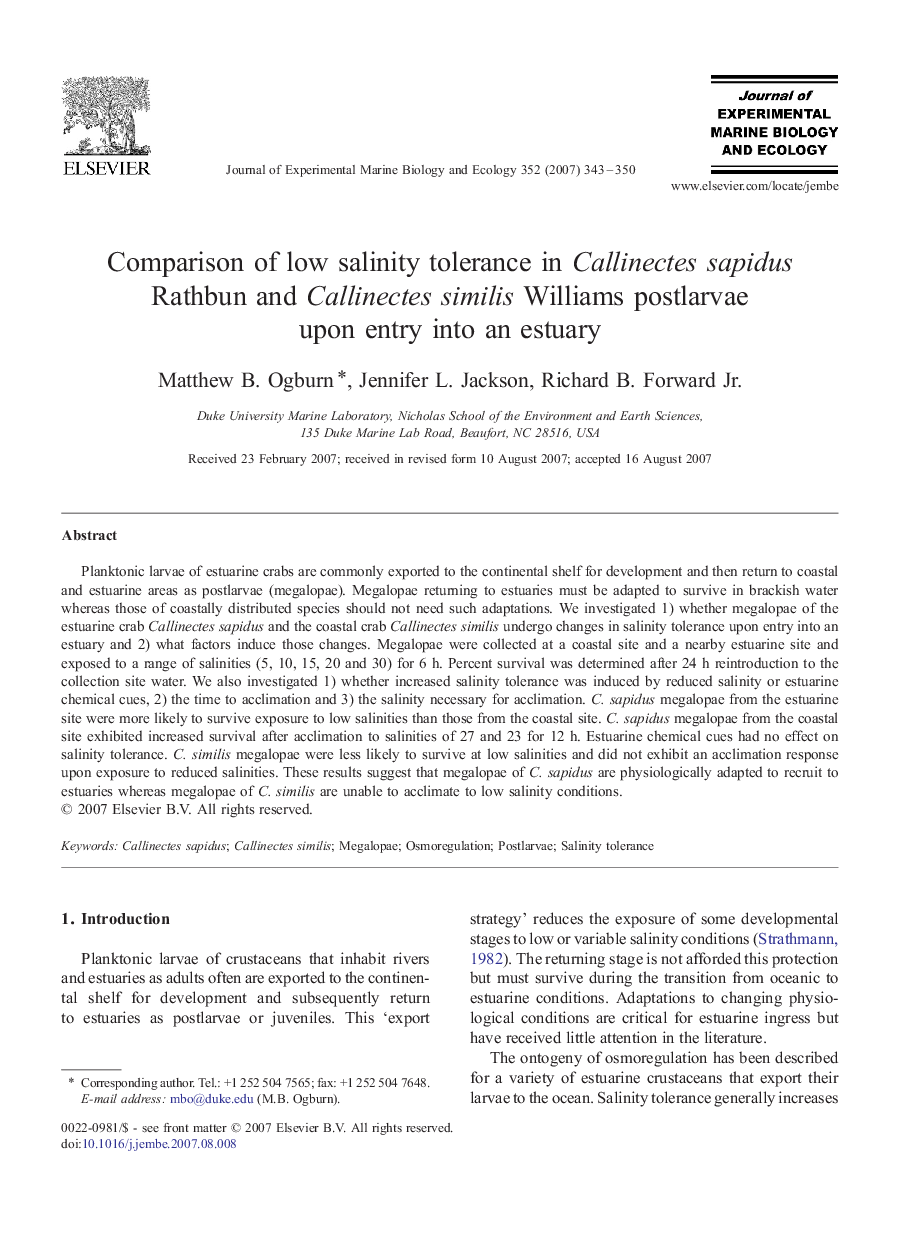| Article ID | Journal | Published Year | Pages | File Type |
|---|---|---|---|---|
| 4397518 | Journal of Experimental Marine Biology and Ecology | 2007 | 8 Pages |
Planktonic larvae of estuarine crabs are commonly exported to the continental shelf for development and then return to coastal and estuarine areas as postlarvae (megalopae). Megalopae returning to estuaries must be adapted to survive in brackish water whereas those of coastally distributed species should not need such adaptations. We investigated 1) whether megalopae of the estuarine crab Callinectes sapidus and the coastal crab Callinectes similis undergo changes in salinity tolerance upon entry into an estuary and 2) what factors induce those changes. Megalopae were collected at a coastal site and a nearby estuarine site and exposed to a range of salinities (5, 10, 15, 20 and 30) for 6 h. Percent survival was determined after 24 h reintroduction to the collection site water. We also investigated 1) whether increased salinity tolerance was induced by reduced salinity or estuarine chemical cues, 2) the time to acclimation and 3) the salinity necessary for acclimation. C. sapidus megalopae from the estuarine site were more likely to survive exposure to low salinities than those from the coastal site. C. sapidus megalopae from the coastal site exhibited increased survival after acclimation to salinities of 27 and 23 for 12 h. Estuarine chemical cues had no effect on salinity tolerance. C. similis megalopae were less likely to survive at low salinities and did not exhibit an acclimation response upon exposure to reduced salinities. These results suggest that megalopae of C. sapidus are physiologically adapted to recruit to estuaries whereas megalopae of C. similis are unable to acclimate to low salinity conditions.
